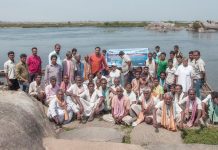India is implementing world’s biggest food security programme but falls behind on nutrition, which is key for complete human nourishment.
India ranks 131 in Human Development Index (HDI) 2020 out of 189 countries with an HDI value of 0.645. The factors include for calculating HDI are Infant Mortality Rate (IMR), Maternity Mortality Rate (MMR), Life Expectancy at Birth, School Dropout Rate and Gross National Income per Capita. These factors take care of social sector, human development and quality of life. This index is a tool used to follow changes of development level occurred over a period of time.
If we look at our state in the context of social sector (human development, quality of life etc.) we find silver linings in last few years. There is significant improvement in life expectancy at birth from 64.8 years during 2009-2013 to 69.3 years during 2014-2018. Infant Mortality Rate (IMR) of the state decreased and now stands at 40 as compared to national average of 41. The Maternity Mortality Rate (MMR) has been decreased consistently and the dropout rates for Primary education improved to 1.55 in 2019-20 from 5.42 in 2018-19.
In January 2018 Government of India (NITI Aayog) had launched a programme called “Transformation of Aspirational Districts” for development of certain districts with poor socio-economic indicators keeping in mind that the development of these districts can lead to the overall improvement of the nation. The programme focusses on six main themes; Health & nutrition, Education, Agriculture & water resources, financial inclusion and Skill development & basic infrastructure which has direct influence on the quality of life and economic productivity of people.
A total of 117 aspirational districts of the nation have been identified by NITI Aayog based on the composite score in above mentioned six basic themes and in consensus with respective state governments. Among states having highest number of districts are Jharkhand (19), Bihar (13), Chhattisgarh (10) and Odisha (10). The districts included from Odisha are Kalahandi, Nawapara, Balangir, Rayagada, Koraput, Malkangiri, Nawarangpur, Kandhamal, Gajapati and Dhenkanal. These districts lag in almost all development indicators and therefore need special focus. The state Government has appointed ten Secretary level officers to monitor the development of each district allotted to them. Government of India has also appointed Central Prabhari Officers who regularly visit the states, review the progress and report to NITI Aayog. NITI Aayog organizes financial resources and prioritizes above mentioned indicators. Government of India stipulates 60% of CSR fund to be spent in Aspirational districts. In order to make the development competitive ‘Delta Ranking’ is made for each district in each theme over 49 Key Performance Indicaters (KPIs) having 81 data points. The sector wise weightage is given below;
- Health & nutrition: 30%
- Education:30%
- Agriculture & water resources: 20%
- Basic Infrastructure: 10%
- Financial inclusion& skill Development: 10%
Delta Ranking measures the incremental progress made by concerned district across identified thematic areas. After base line ranking is done, data are normalized and a composite score is calculated. Then districts are ranked based on their progress on real time basis. After this, the distance of each district is calculated from either the state or nation’s best district. Month wise ranking is published by NITI Aayog.
Recent ranking under the programme for August 21 has been released and Gajapati District of Odisha ranked first in national level in overall ranking. It stood first in Agriculture& water resources and second in basic infrastructure. The district received a reward money of Rs 3.0 Crore rupees for outstanding performance with 2.7 composite score which was highest in national level for the month. In education sector tribal dominated Koraput district has topped the list of aspirational districts and Bolangir district was in 3rd position for June 2021. Similarly, three districts namely Nawarangpur, Rayagada and Koraput have improved in various metrics in between March 2018 and March 2020 and occupied 13th rank, 16th and 17th rank respectively.
The Global Hunger Index (GHI) is another tool that measures and tracks hunger globally and is prepared by European NGO of Concern Worldwide and Welthungerhilfe. The report is issued in October each year. This report is based on four indicators: insufficient calorie intake, child mortality, prevalence of low height per age and prevalence of low weight per height. Recently published report says two of the four indicators have worsened for India and other two have improved. India has been successful in saving 4million kids from scourge (low height per age) of stunting and saved nearly 2 million kids under five years from dying. India is implementing world’s biggest food security programme but falls behind on nutrition, which is key for complete human nourishment.
Despite of the negative effect of COVID pandemic, India has done it’s best for improving the quality of life of citizens. In June 2021, United Nation Development Project (UNDP) released an appraisal report where it praised the “Transformation of Aspirational District’s Programme” as global example. Based on three pillars of ‘Convergence, Collaboration and Competition’the programme has translated into vibrant Jana Andolana, involving 27states and 14% of population of the country.





































